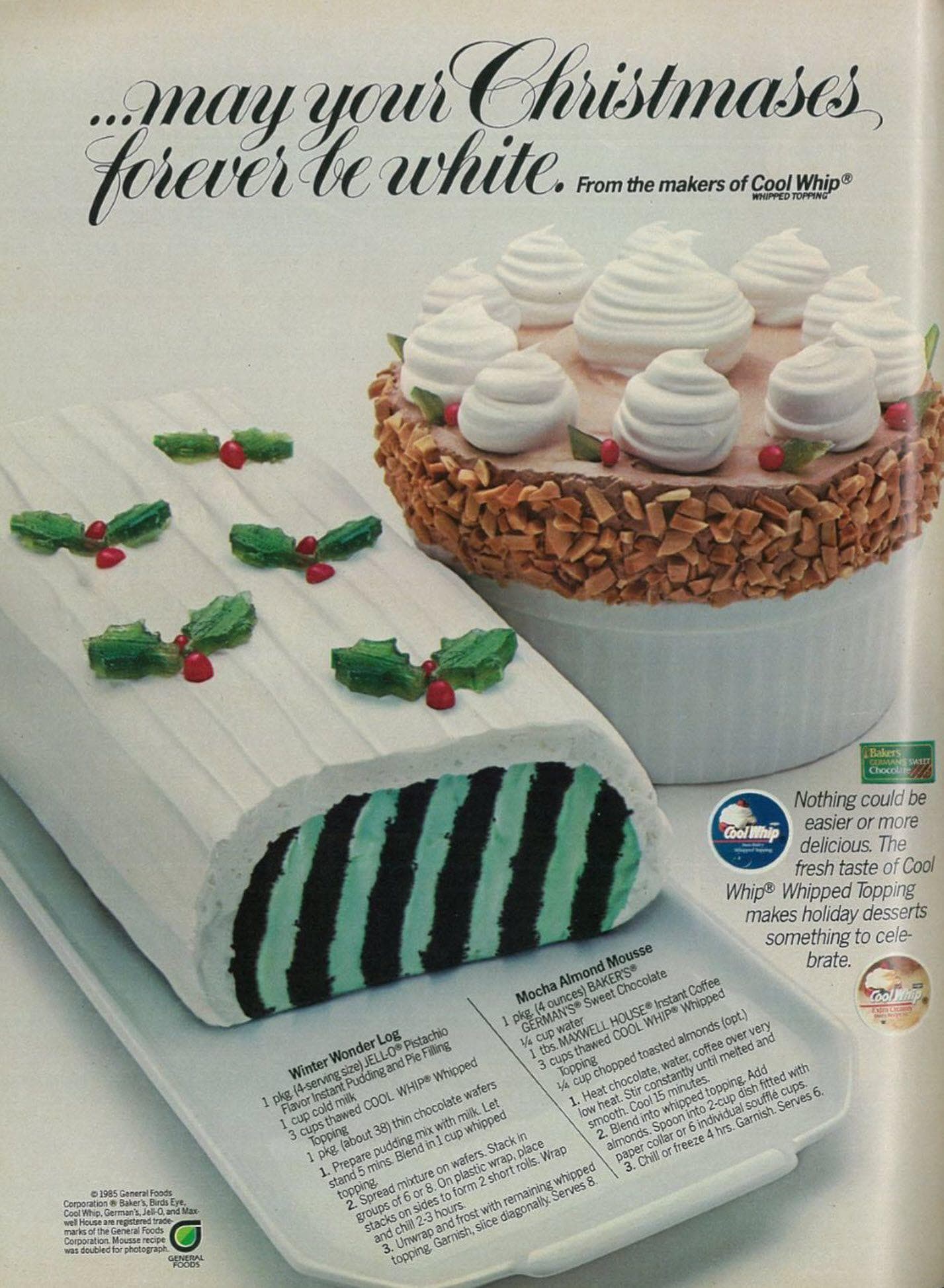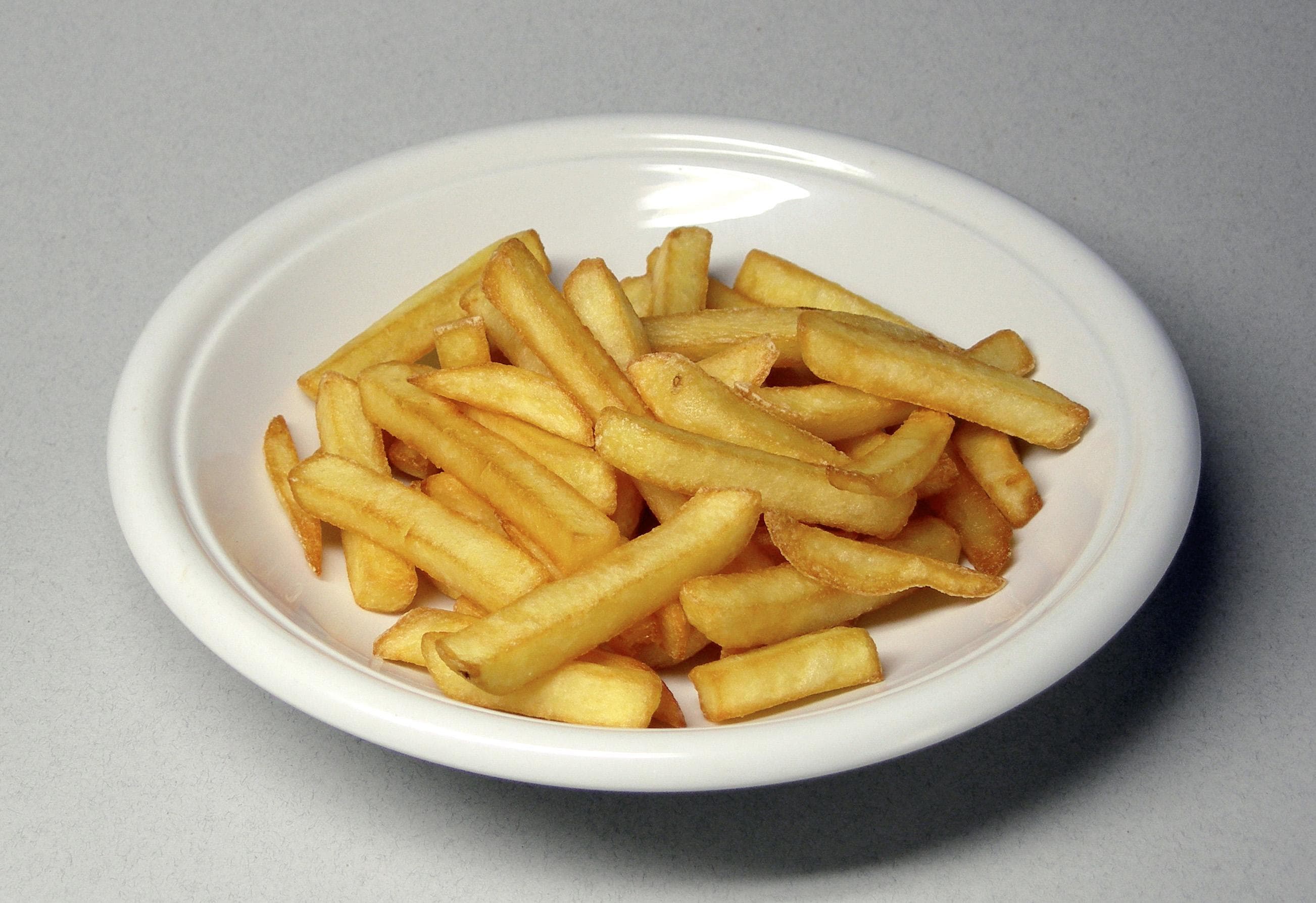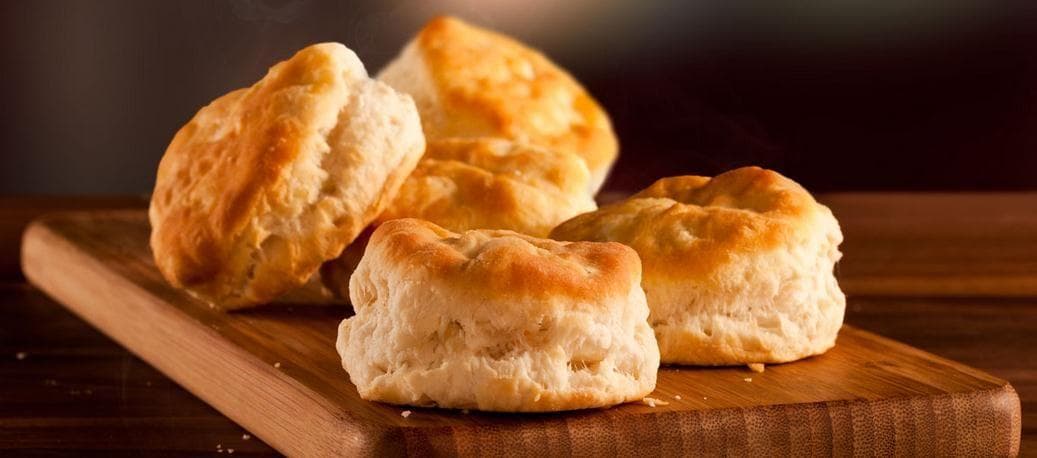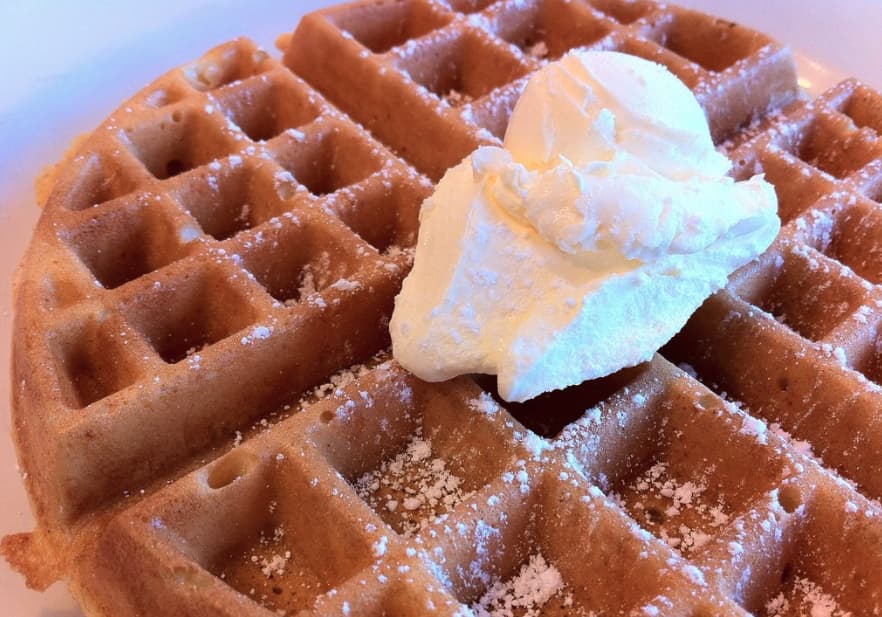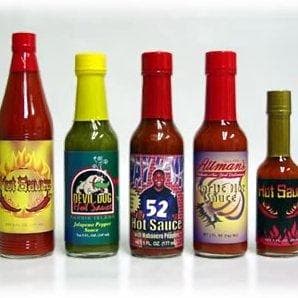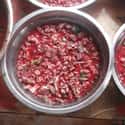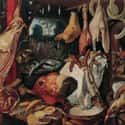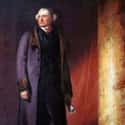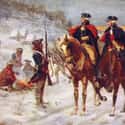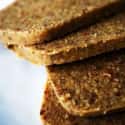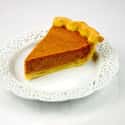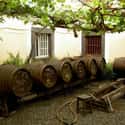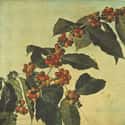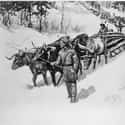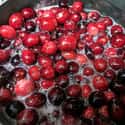-
(#1) Blood Pudding
Americans used every part of their animals during the Revolution, including their blood. Hannah Glasse's 1805 cookbook contained a recipe for blood pudding. She recommended mixing cornmeal with boiled milk or water, and then stirring in blood. After mixing, Glasse recommended adding hog's lard and treacle.
She advised cooks to boil the blood pudding for up to seven hours before eating it.
-
(#2) Boiled Ox Liver And Sheep's Head
Americans during the Revolution used every part of the animal. Joseph Plumb Martin, a private from Connecticut, recorded some of the unusual foods he ate during the conflict. Martin boiled "an old ox's liver," but eating the meat gave him a terrible stomachache. After taking medicine, Martin “discharged the hard junks of liver like grapeshot from a fieldpiece.”
During the Revolution, Martin also ate "a sheep's head," refusing to let it go to waste, and "an ox's milt, or spleen," which made him throw up.
-
(#3) Ice Cream
Just after the American Revolution ended, Thomas Jefferson went to France. While there, Jefferson may have tasted ice cream for the first time. The dessert became a favorite of the Founding Father, who popularized his own recipe for ice cream.
As president, Jefferson served ice cream at least six times. In 1802, a Massachusetts Congressman wrote, "Ice cream very good, crust wholly dried, crumbled into thin flakes." Another dinner party guest marveled at the "balls of the frozen material inclosed [sic] in covers of warm pastry, exhibiting a curious contrast, as if the ice had just been taken from the oven."
-
(#4) Firecake
Americans ate firecake out of necessity. The recipe called for flour and water - and nothing else. When General Washington's men spent a winter in Valley Forge, ration shortages meant many turned to firecake. Soldiers would mix their flour ration with water and bake it in an iron kettle. Without yeast or leavening, firecake was dense and tasteless.
Even worse, weevils and maggots were a constant problem during the conflict. If maggots got into the flour stores, men simply cooked them up with the firecake, not complaining about the extra protein.
-
(#5) Scrapple
The Pennsylvania Dutch popularized scrapple, made from the leftover parts of a pig. One recipe that dates back to the colonial period recommends using the pig's "head, feet, and any pieces which may be left after having made sausage meat." Toss them in a pot with salt and let them boil until soft enough to remove the bones.
Americans seasoned the meat with pepper and salt, adding Indian meal to thicken the meat into a mush. After cooling, cooks sliced the scrapple and fried it in hot lard.
-
(#6) Pumpkin Pie
Pumpkins were a New World food that Americans cooked in several ways during the American Revolution. One of the most popular uses was pumpkin pie. In her 1805 cookbook, Hannah Glasse explains how to make pumpkin pie the way the Founding Fathers ate it.
Glasse recommended peeling a pumpkin and stewing it until soft. The recipe called for a mix of one pint of pumpkin, one pint of milk, one glass of rosewater, and one glass of Malaga wine. To finish off the pie, Glasse called for half a pound of butter, seven eggs, sugar, salt, and nutmeg.
-
(#7) Madeira Wine
George Washington stocked up on Madeira wine just months after the American Revolution began. In preparation for an extended conflict, Washington ordered 1,900 bottles of the wine. Madeira wine, imported from the Portuguese colony of Madeira, might contain sweeteners or brandy depending on the variety.
To protest British import taxes in the 1760s, John Hancock underreported his Madeira wine imports, which led to a mob in Boston. While debating independence, the First Continental Congress delegates drank Madeira, and Thomas Jefferson raised a glass of Madeira after the signing of the Declaration of Independence.
-
(#8) Coffee
Coffee was so popular during the American Revolution that women in Boston rioted to keep the cost of coffee low. When merchant Thomas Boylston manipulated the price of coffee by stockpiling it, at least a hundred women marched to his warehouse.
Abigail Adams wrote about the July 24, 1777, riot. "A number of females, some say a hundred, some say more, assembled with a cart and trucks, marched down to the warehouse, and demanded the keys, which he refused to deliver.” When Boylston refused to open the warehouse, things took an aggressive turn:
One of them seized him by his neck and tossed him into the cart. Upon his finding no quarter, he delivered the keys, when they tipped up the cart and discharged him, then opened the warehouse, hoisted out the coffee themselves, put it into the trucks and drove off.
-
(#9) Bread
Bread might not sound like an exciting food, but for starving Continental forces in 1777, bread saved their lives. Instead of sending more food to the troops stuck in Valley Forge, Congress sent them a baker named Christopher Ludwick.
Ludwick held the title of "superintendent of bakers, and director of baking, in the grand army of the United States." Congress initially asked Ludwick to bake one pound of bread per pound of flour. The deal would have let Ludwig pocket and sell extra flour. Ludwig told Congress:
No, gentlemen, I will not accept of your commission upon any such terms. I do not wish to grow rich by the [conflict]: I have money enough. I will furnish one hundred and thirty-five pounds of bread for every hundred pounds of flour you put into my hands.
-
(#10) Rum
Rum has had a long history in the Americas. Made from fermented molasses, a byproduct of Caribbean sugar plantations, rum was shipped to the British colonies by the gallon. By the time of the American Revolution, colonists were distilling their own rum, with over 150 rum distilleries in New England alone.
Just how much did Revolutionary Americans love rum? America's rum consumption hit an astonishing four gallons per person per year at the time of the Revolution.
-
(#11) Ox Meat
Just a few years after the American Revolution, the new country watched as their allies, the French, had their own revolution. In 1793, Boston celebrated the French Revolution with a feast. They hung a sign around an ox's neck that read "Peace Offering to Liberty and Equality" and led the ox to Liberty Square.
The Bostonians then carved up the animal and served it alongside 1,600 loaves of bread, turkey, and punch.
-
(#12) Cranberry Tarts
While the American colonists enjoyed many British foods, they also adopted new foods grown in North America. In her 1805 cookbook, The Art of Cookery Made Plain and Easy, Hannah Glasse included "several new receipts adapted to the American mode of cooking."
One of those was cranberry tarts. Glasse recommended stewing cranberries into a jelly, adding brown sugar, and then baking with flour and butter.
-
(#13) A Daily Military Ration
During the American Revolution, colonial forces received daily rations. These included a pound of meat per day, which might be beef, salt pork, or salt fish. Each man received a pound of flour every day, as well. In addition, troops ate peas or beans, milk, and a smaller ratio of rice, corn, and molasses.
But troops didn't always receive full rations. When they marched, fresh milk was hard to find. And during the long winter in Valley Forge in 1777, many men faced starvation rations.
-
(#14) Tea
The British colonies loved tea, and when Parliament cracked down on tea smugglers, Americans tossed tea into Boston Harbor, in what became known as the Boston Tea Party. During the Revolution, many Americans rejected British tea as an act of patriotism. British loyalists who drank tea faced criticism from revolutionaries.
While some Americans drank coffee to replace tea, others began drinking raspberry leaf tea and American-grown herbal teas.
New Random Displays Display All By Ranking
About This Tool
Because Britain has been exploiting the colonies, it has severely hindered the economic development of the North American colonies. The North American people fought against the British economic policies. The victory of the Revolutionary War has made great contributions to the development of the American economy and culture. Food played an important role in the Revolutionary War, the army without food cannot obtain energy and calories.
Depending on the unique American climate and environment, many foods became important supplies at that time. Cash crops such as rice, tobacco, and cotton were mainly grown, and many products were even comparable to British products on the international market. There is a list of 14 unconventional foods that most people ate during the Revolutionary War.
Our data comes from Ranker, If you want to participate in the ranking of items displayed on this page, please click here.




